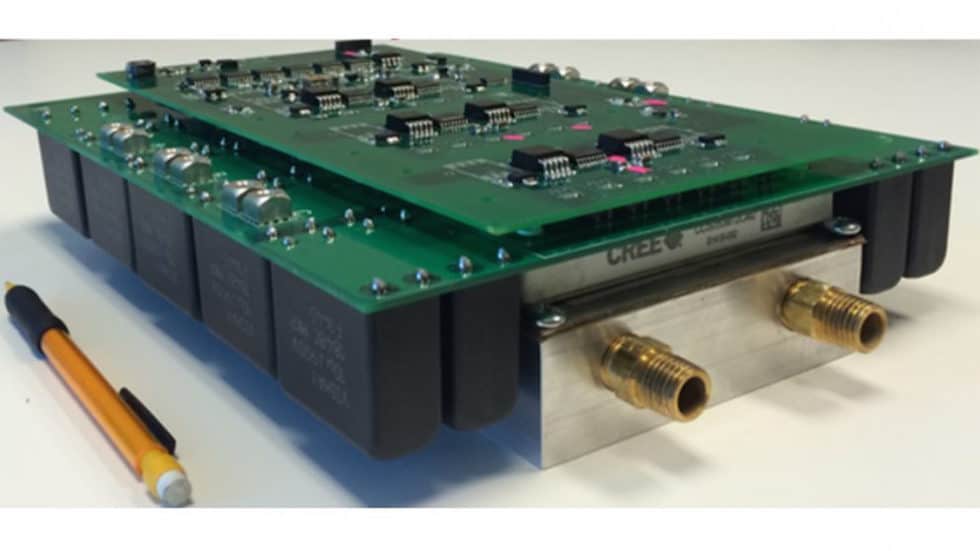
Electric and hybrid vehicles rely on inverters to ensure that enough electricity is conveyed from the battery to the motor during vehicle operation. Conventional inverters rely on components made of the semiconductor material silicon.
Now researchers at the Future Renewable Electric Energy Distribution and Management (FREEDM) Systems Center at North Carolina State University (NC State) have developed an inverter using silicon carbide (SiC), a wide-bandgap semiconductor material.
“Our silicon carbide prototype inverter can transfer 99 per cent of energy to the motor, which is about two per cent higher than the best silicon-based inverters under normal conditions,” said Iqbal Husain, ABB Distinguished Professor of Electrical and Computer Engineering at NC State and director of the FREEDM Center.
“Equally important, the silicon carbide inverters can be smaller and lighter than their silicon counterparts, further improving the range of electric vehicles,” added Husain, who co-authored two papers related to the work. “And new advances we’ve made in inverter components should allow us to make the inverters even smaller still.”
The new SiC-based inverter is reportedly able to convey 12.1 kilowatts of power per litre (kW/L), which is said to be close to the US Department of Energy’s goal of developing inverters that can achieve 13.4kW/L by 2020.
“Conventional, silicon-based inverters have likely improved since 2010, but they’re still nowhere near 12.1kW/L,” Husain said in a statement.
The power density of new SiC materials allows engineers to make the inverters – and their components, such as capacitors and inductors – smaller and lighter.
“But, frankly, we are pretty sure that we can improve further on the energy density that we’ve shown with this prototype,” Husain said.
FREEDM researchers have recently made new, ultra-high density SiC power components that they expect will allow them to get closer to DOE’s 13.4 kW/L target once it’s incorporated into next generation inverters.
The design of the new power component is claimed to be more effective at dissipating heat than previous versions, allowing for the development of air-cooled inverters and eliminating the need for bulky liquid cooling systems.
“We predict that we’ll be able to make an air-cooled inverter up to 35kW using the new module, for use in motorcycles, hybrid vehicles and scooters,” Husain said. “And it will boost energy density even when used with liquid cooling systems in more powerful vehicles.”
The current SiC inverter prototype was designed to go up to 55kW, which is now being scaled to kW 100kW using off-the-shelf components. The team is also in the process of developing inverters that make use of the new, ultra-high density SiC power component that they developed on-site.
A paper on the new inverter, “Design Methodology for a Planarized High Power Density EV/HEV Traction Drive using SiC Power Modules,” will be presented at the IEEE Energy Conversion Congress and Exposition (ECCE), being held September 18-22 in Milwaukee. A paper on the new, ultra-high density SiC power component, “Development of an Ultra-high Density Power Chip on Bus Module,” will also be presented at ECCE.




Project to investigate hybrid approach to titanium manufacturing
What is this a hybrid of? Superplastic forming tends to be performed slowly as otherwise the behaviour is the hot creep that typifies hot...